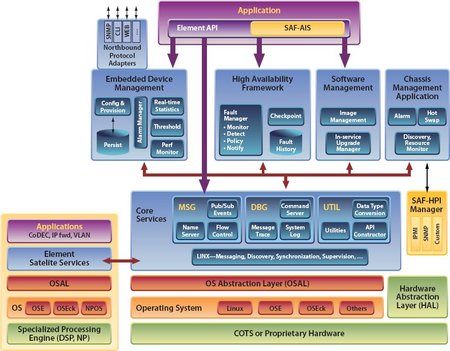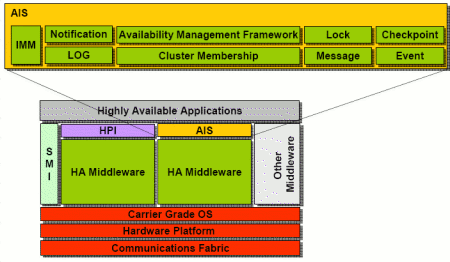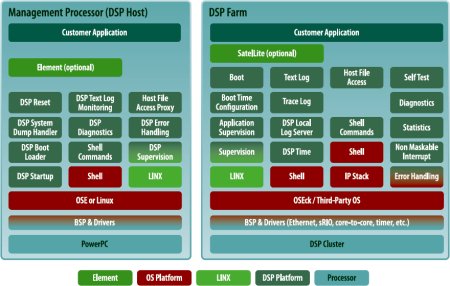HA middleware boasts “full” AMF implementation
Mar 11, 2008 — by Eric Brown — from the LinuxDevices Archive — 11 views Enea has updated its high-availability middleware for heterogeneous telecom environments that mix Linux with its own OSE and OSEck RTOSes. Element 3.0 boasts a “full” implementation of the Service Availability Forum's (SAForum's) Availability Management Framework (AMF), along with “in-service upgrades” and optional DSP… management add-ons.
Enea has updated its high-availability middleware for heterogeneous telecom environments that mix Linux with its own OSE and OSEck RTOSes. Element 3.0 boasts a “full” implementation of the Service Availability Forum's (SAForum's) Availability Management Framework (AMF), along with “in-service upgrades” and optional DSP… management add-ons.
Element comprises various middleware components that sit between telecom OSes and the carrier's service applications. The components provide event logging, application monitoring, shelf management, fault management, and other services aimed at helping carriers achieve 99.999 percent uptime. The components communicate via Linx, an ultra-scalable IPC (interprocess communication) technology available under commercial and open source licenses.

Element 3.0 architecture
(Click to enlarge)
Version 3.0's main new feature appears to be a “full” implementation of the SAForum's AMF. Described by Enea as the “most mature component” of the SAForum's AIS (application interface specification), AMF manages hardware and software redundancy and failover (see diagram below), says Enea.

AMF is a core part of the SAForum's AIS specification
(Click to enlarge)
Element 3.0 is said to specifically support the AMF's redundancy models for 2N, N + M, N-way, and N-way-active configurations, as well as fail-over modes that enable active and stand-by components to reside on the same or different nodes. This flexibility is said to reduce development time by enabling developers to map the best redundancy model to their application, thereby saving time.
Another touted Element 3.0 feature, in-service upgrades, is said to reduce down-time while extending cluster-wide version management to individual components or nodes, which can now be selectively loaded and restarted in a coordinated fashion. Also improved in the 3.0 release is DSP support, thanks to integration with Enea's dSpeed DSP management system software. Introduced in October, dSpeed is said to enable DSP failures to be contained and repaired, thereby limiting packet loss and network degradation.

Enea's dSpeed architecture
(Click to enlarge)
Stated Tamara Casey, CEO and co-founder of Virginia-based 4DK, which is building a “SuperConnectivity” wireless contextual translation service platform on Element, “Carrier Grade reliability is critical for next-generation, all-IP technologies. Enea Element is the industry's most advanced middleware platform.”
Enea last revised Element in October when it added support for “super-clusters,” which combine different microprocessor architectures, real-time OSes, and hardware architectures. Prior to that, an Element 2.2 release added basic support for AIS. The previous major release was back in September 2006 when Enea released Element 2.0.
Enea is best-known as a vendor of proprietary RTOSes (real-time operating systems) for mobile phones and telecom carrier infrastructure. However, in recent years, the company has been diversifying its product and service portfolios — for example, by branching out into HA middleware, real-time databases, and by acquiring QiValue, an embedded Linux service provider.
Availability
Element 3.0 availability details were not provided. However, the release appears to be available now for several Linux distributions commonly used in telecom, including RedHat Enterprise Linux 4.0, Fedora Core 4.0, MontaVista Linux 3.1/4.0, and Wind River PNE Linux version 1.4. It also appears to support Enea's OSE RTOS and OSEck RTOS for DSPs. Supported architectures (in addition to DSPs) include both x86 and PowerPC.
This article was originally published on LinuxDevices.com and has been donated to the open source community by QuinStreet Inc. Please visit LinuxToday.com for up-to-date news and articles about Linux and open source.